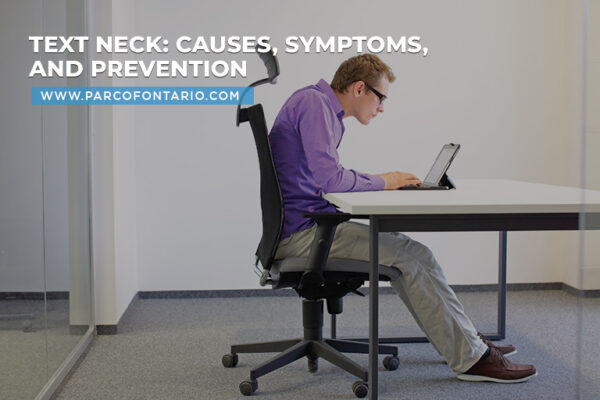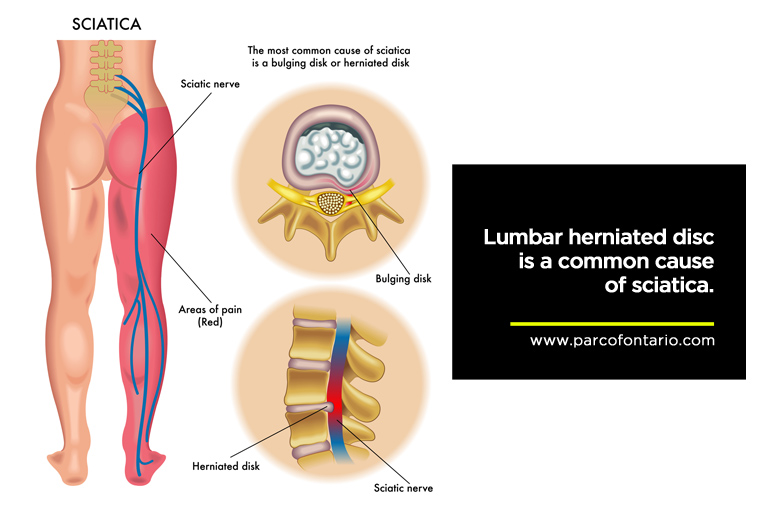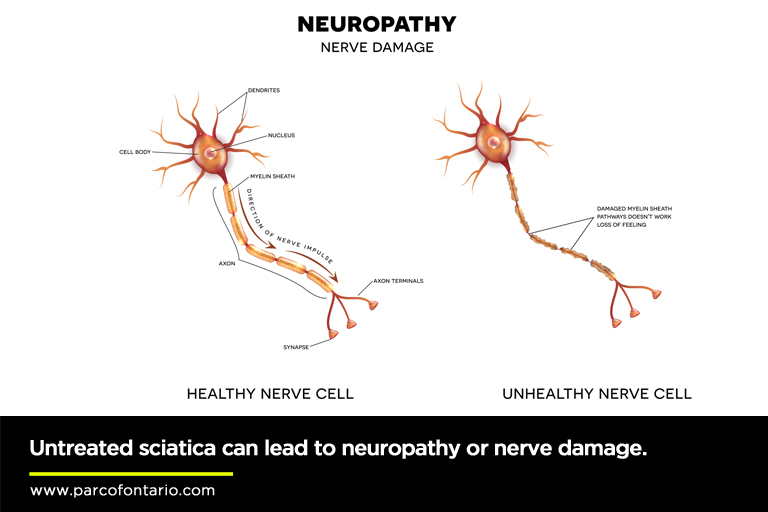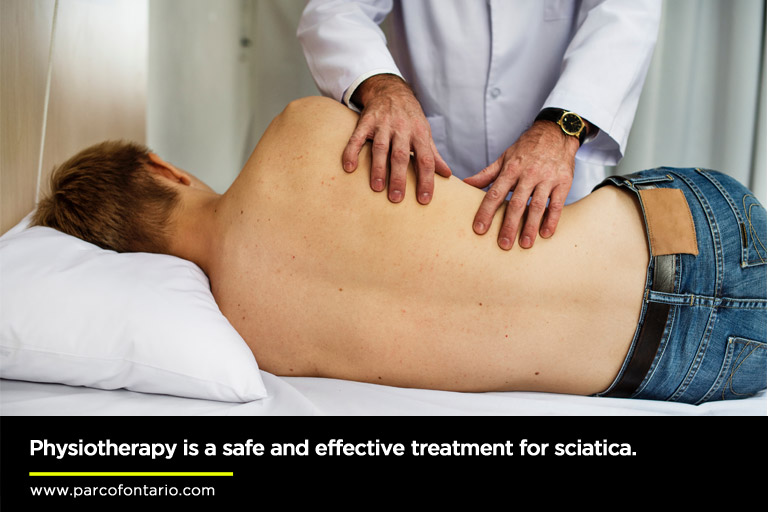
Text Neck: Causes, Symptoms, and Prevention
Many of us spend long hours hunching over our electronic mobile devices and laptops. As we spend more time texting, browsing social media, and reading on our devices, this constant downward gaze…
Read More
Back pain can immediately flare up after an injury — or slowly (and mysteriously) develop over a period of months. Many people suffer from short-term (acute) or long-term (chronic) pain. While some causes of back pain are hard to determine, others can be pinpointed easily. Sciatica is one of the back pain causes that is relatively simple to identify.

Sciatica (also known as lumbar radiculopathy) is a type of back pain caused by the irritation of the sciatic nerve. This is the largest nerve in the body that extends from the lower back down to the back of each leg. Sciatica (or sciatic nerve pain) is not likely to occur before age 20. However, this condition becomes more common among middle-aged people.
Since the term sciatica is loosely used to describe leg pain, its presentation is widely varied. It does not always present itself immediately after an injury; it can gradually develop over time. “Sciatica” is not considered a medical diagnosis — it is regarded as a symptom of an underlying health condition.
Common causes of sciatica symptoms include:

The good news is about 90 percent of people can recover from sciatica without a need for surgery. While sciatica symptoms should not be alarming, some rare ones may indicate that the sciatic nerve is severely injured.
Watch for these two symptoms, which require immediate medical attention:
Lumbar microdiscectomy and lumbar laminectomy are two forms of surgery used to correct a sciatica problem. Worsening neurological symptoms in the leg may also be suggest cauda equina syndrome.
Immediate medical attention is necessary when these two rate sciatica symptoms occur after an accident or trauma — or when accompanied by fever and/or loss of appetite.

It is crucial to discuss sciatica symptoms with your GP (general physician) or a specialist, determine the cause, and get proper treatment. If you fail to seek medical help for sciatic problems, the condition may worsen, causing lasting and serious damage to the hips and lower back.
Here are several health issues that can arise from untreated sciatica:
The two common questions medical professionals will ask a patient about sciatica include (1) how the pain started and (2) location of the pain. To further evaluate your condition, you may be asked to walk on heels or toes, squat, or raise a leg without bending the knee. These tests help a doctor determine if the sciatic nerve is irritated. Magnetic Resonance Imaging (MRI), X-ray, CT scan, and electromyogram may also be ordered to further define the exact cause of sciatica.

Acute or chronic pain treatment depends upon identification of its underlying cause. Here are some options:
If the symptoms of chronic sciatica fail to respond to these treatments and continue to intensify, surgery may be recommended. Surgical options for chronic sciatic nerve pain include:
A surgeon will discuss the benefits and risks of surgery and recommend the best option for each individual.

Chiropractic care is a non-invasive and drug-free treatment that boosts the potential for the body to heal itself naturally. Based on its scientific principle, chiropractic improves mobility and limits movement that could result in pain, reduced function, and physical performance. Spinal adjustments are the core of chiropractic care, helping restore misaligned vertebral bodies to their proper place in the spinal column. It reduces nerve inflammation, muscle spasm, pain, and other symptoms of sciatica.
Your healthcare provider will work to understand the main cause of any sciatica problem. After receiving a referral to an excellent physiotherapy clinic you will get an individualized right treatment plan to reduce pain and address other challenges. Maintaining a healthy weight, avoiding long sitting hours, and engaging in regular physical activities all help prevent recurrence of sciatica.
For sciatica treatment in Ajax, Oshawa, Whitby, Mississauga, and Scarborough call PARC of Ontario at (905) 686-9081. We’ve taken care of our patients since 1995.